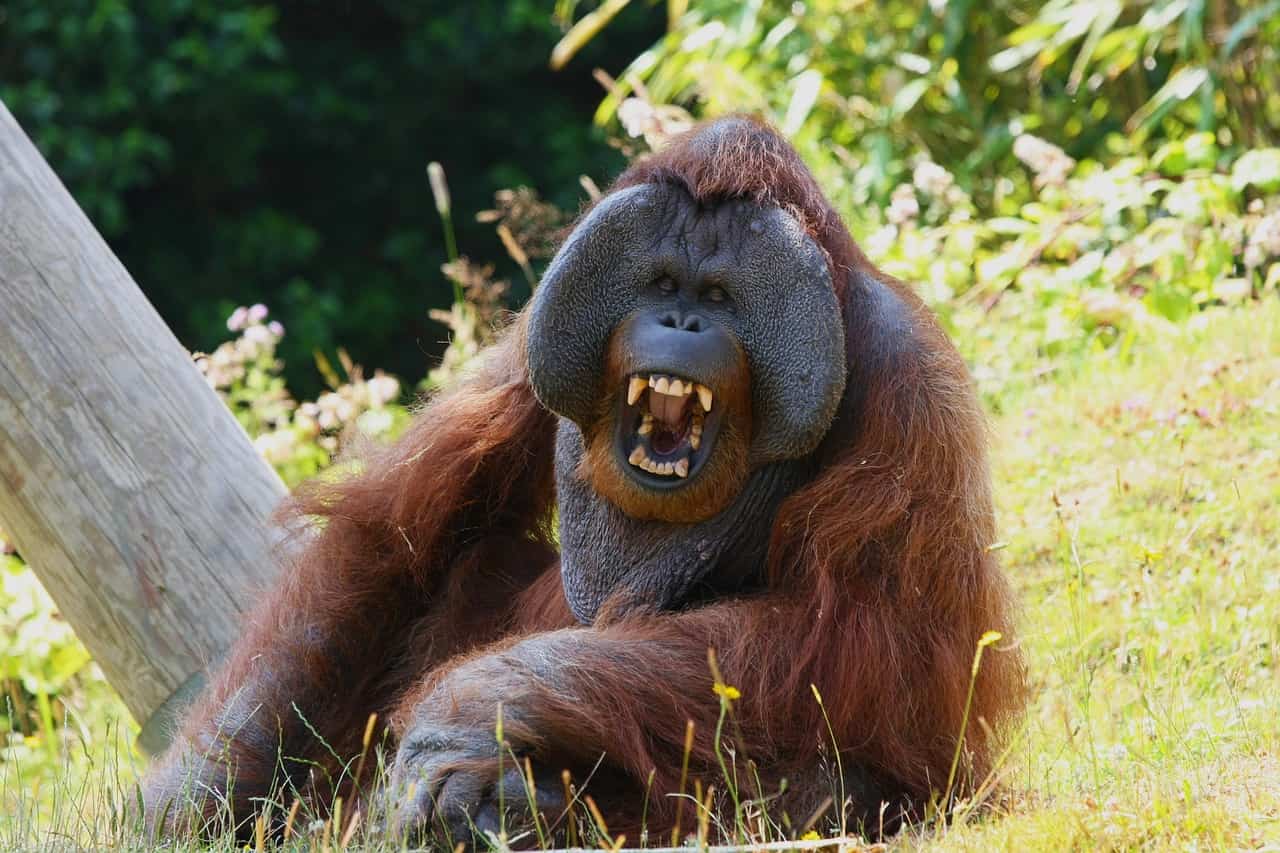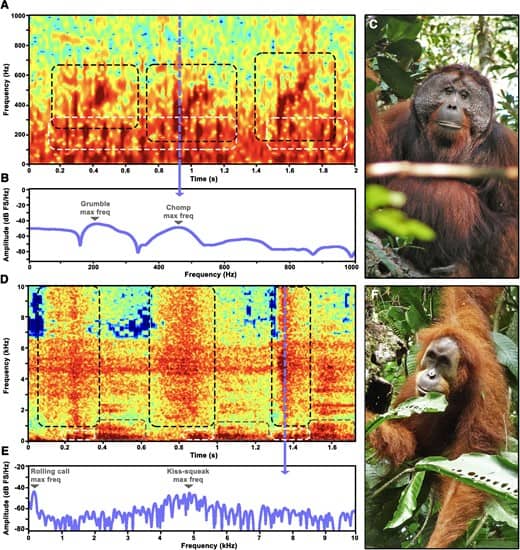
Move over, Reggie Watts! Orangutans are taking the stage with their incredible vocal skills. A study led by the University of Warwick has revealed that these magnificent apes can produce not just one, but two separate sounds simultaneously. It’s a remarkable feat that mirrors the complexity of songbirds and the awe-inspiring talent of human beatboxers.
Orangutans and vocal duets
Imagine an orangutan belting out two different notes at the same time. It might sound like a cacophony, but for these talented creatures, it’s all in a day’s work. Scientists conducted extensive observations of vocalizing orangutans in Borneo and Sumatra, totaling a staggering 3,800 hours of recordings.
What they found was rather astonishing. The primates from both populations could vocalize two sounds simultaneously.
Dr. Adriano Lameira, Associate Professor of Psychology at the University of Warwick, explains that orangutans possess the ability to create both voiced and unvoiced sounds, just like humans. Our vocalizations rely on the lips, tongue, and jaw to form consonants, while the larynx produces the voiced, open sounds of vowels with exhaled air.
People usually can’t produce two or more sounds at the same time easily. Just try it out for yourself — it is incredibly challenging. But professional beatboxers can do this effortlessly after thousands of hours of practice, producing some wild sounds such as mimicking the percussion sounds of drum machines.

But if humans can’t innately produce two sounds simultaneously, this raises intriguing questions about the origins of our beatboxing prowess. Where did this ability come from? The answer may lie within the evolutionary journey of our ancestors.
The fact that two separate populations of orangutans were observed making simultaneous vocalizations is undeniably proof that the ability is deeply rooted in their biology. Dr. Lameira emphasizes that this phenomenon cannot be dismissed as a mere coincidence or learned behavior. It is an inherent characteristic of these intelligent creatures and opens up new avenues for understanding the evolution of vocal communication.
For instance, in Borneo, mighty male orangutans employ a combination of “chomps” and “grumbles” during confrontations. Picture it as an orangutan beatboxing its way through a territorial dispute. Similarly, female orangutans in Sumatra use a combination of “kiss squeaks” and “rolling calls” to alert others of potential dangers.
Previously, scientists had focused on songbirds to gather important clues that might help them unravel the evolution of speech. However, bird anatomy is very different from that of humans. Now that complex vocalization has been pinpointed in our primate relatives, orangutans may be a better avenue of research.
“Now that we know this vocal ability is part of the great ape repertoire, we can’t ignore the evolutionary links,” Lameira said.
“It could be possible that early human language resembled something that sounded more like beatboxing, before evolution organized language into the consonant–vowel structure that we know today.”
The findings appeared in the journal PNAS Nexus.



